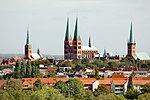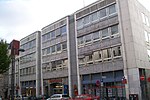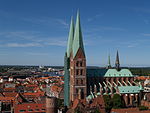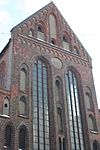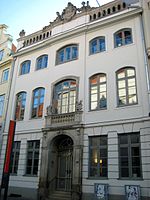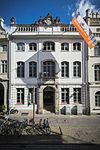Theater Lübeck

The Theater Lübeck (formerly Stage of the Hansestadt Lübeck, colloquially Stadttheater) is one of the largest theaters in the German state of Schleswig-Holstein. It is managed by Theater Lübeck GmbH, a state-owned company of the Hansestadt Lübeck. Public interest in theatrical works and opera arose in Lübeck in the early days of the Age of Enlightenment and the first opera production in the city took place on 2 June 1746 in the house of master craftsman Schröder Ecke on the Königstraße. The predecessor of the current building dates from 1752. The transition of the company to the city in the 19th century is described by Thomas Mann in his novel Buddenbrooks. Prominent conductors that began their careers in Lübeck include Hermann Abendroth, Wilhelm Furtwängler and Christoph von Dohnányi.
Excerpt from the Wikipedia article Theater Lübeck (License: CC BY-SA 3.0, Authors, Images).Theater Lübeck
Fischergrube, Lübeck Innenstadt (Innenstadt)
Geographical coordinates (GPS) Address External links Nearby Places Show on map
Geographical coordinates (GPS)
| Latitude | Longitude |
|---|---|
| N 53.869722222222 ° | E 10.686388888889 ° |
Address
Stadttheater
Fischergrube
23552 Lübeck, Innenstadt (Innenstadt)
Schleswig-Holstein, Germany
Open on Google Maps


